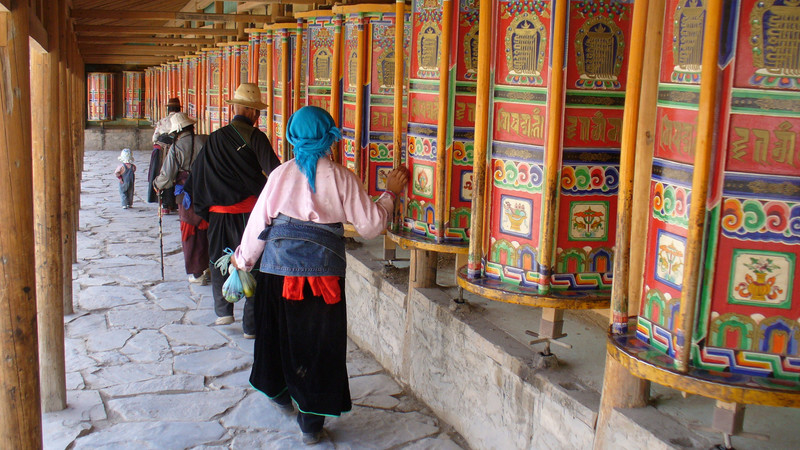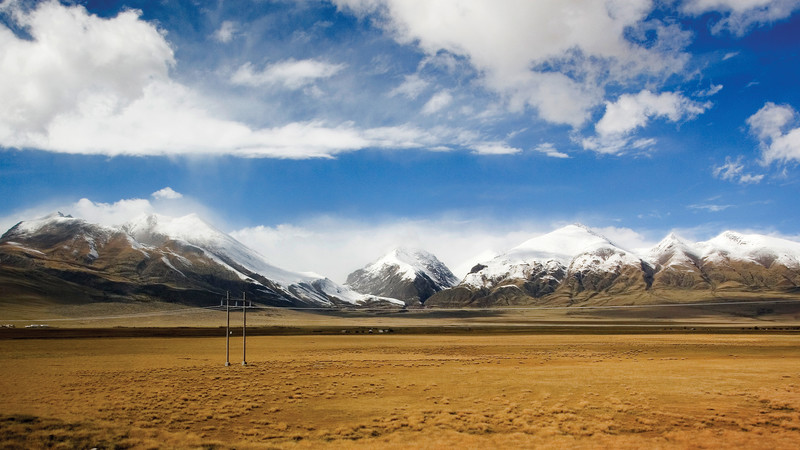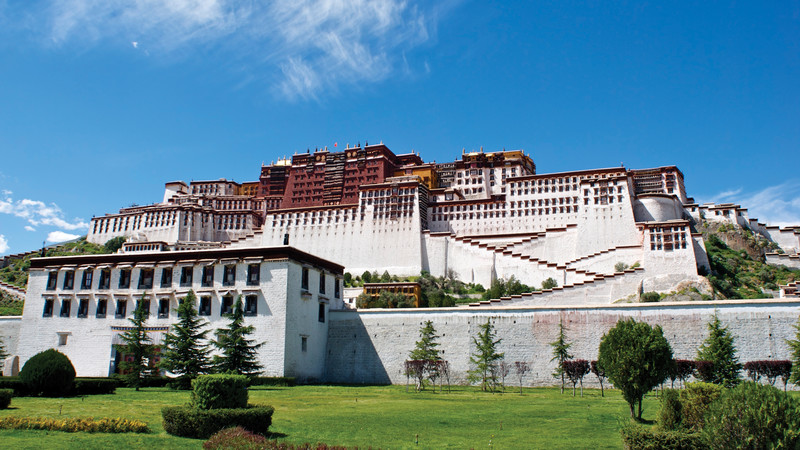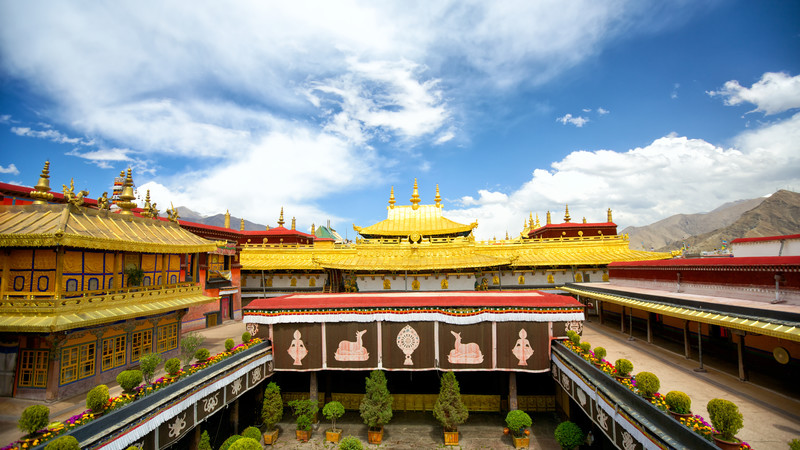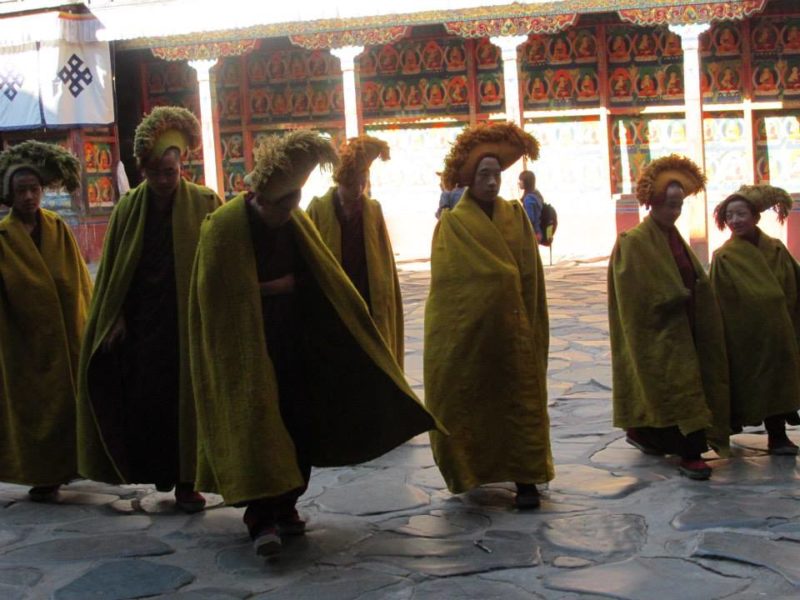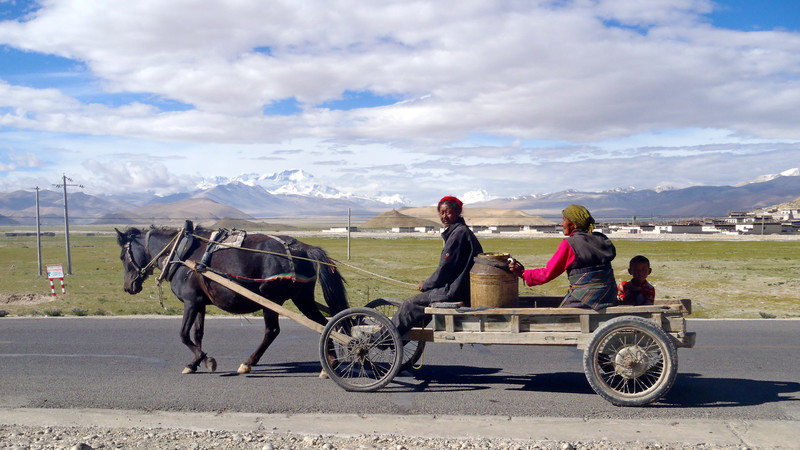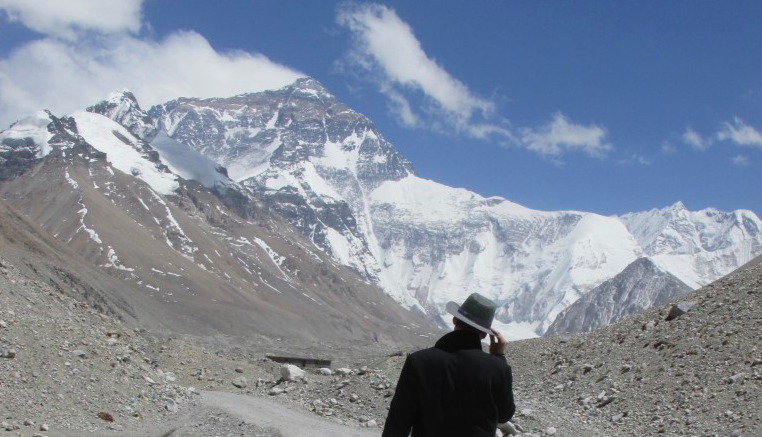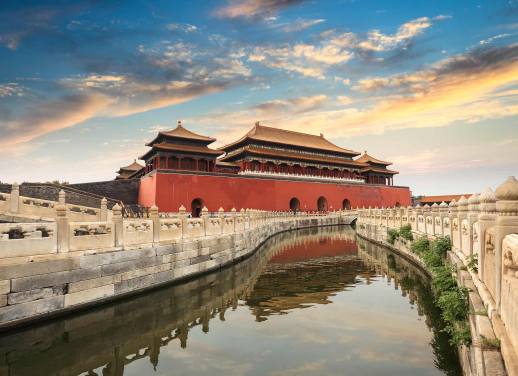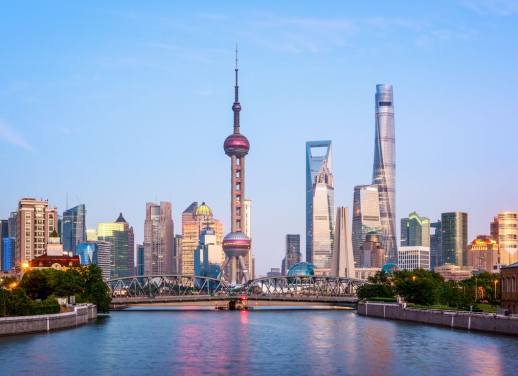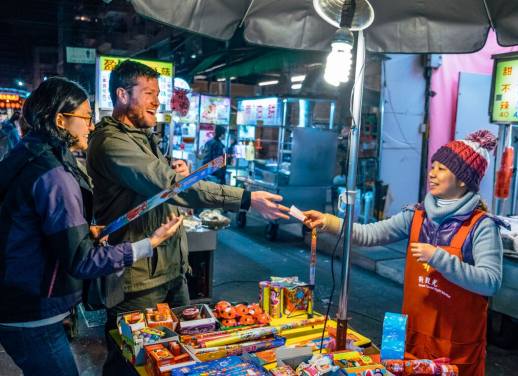Chengdu, the capital of China’s Sichuan province, is 2000 kilometers to the east of Lhasa. Such is the vastness of China that this city is considered the gateway to Tibet, and contains a large Tibetan diaspora.
During my six months as a language student in Chengdu, I’d often wander through the Tibetan quarter and watch the monks in their red and yellow robes sipping tea and talking in their unfamiliar language. The cafes served Tibetan food – a preview of things to come – and I’d sit among the locals and imagine myself in this remote and distant land of monasteries and mountains.
But imagining was not enough. My curiosity grew, and I was desperate to experience Tibet firsthand and see Mount Everest with my own eyes. With just a few weeks left in China, I secured a ticket on the 47-hour train to Lhasa, and made my way to Chengdu Railway Station. The journey had begun.
In China, but not of it
The highest railway in the world takes you across windswept plains and flashes by crystalline blue lakes. From the window you see villagers herding yaks in small valleys, and notice the landscape change from the green fields of Sichuan to the craggy Tibetan Plateau.
Tibet still retains a distinct identity, a beautiful identity. Most locals I met spoke Mandarin Chinese as a second language, and interacted with each other in their own tongue. You’ll see the unique Tibetan alphabet everywhere, an ornate script which traces its origins back to the 7th century.
VISIT TIBET ON OUR NEW 14-DAY ‘TIBETAN JOURNEY’
Tibetan Buddhism is still thriving
While the home of the Dalai Lama has become a museum, the temples are still filled with the chants and footsteps of the monks who continue to practice their centuries-old religion.
The holiest of such sites is the Jokhang Temple, which stands in Lhasa’s Barkhor square – a site you’re sure to visit if you make the trip.
Pilgrims travel from the most remote edges of the province to prostrate themselves before its walls. Wearing blocks on their hands and knees, they throw themselves onto the cold concrete. Unharmed, they then pick themselves up and repeat the tribute.
When you visit, pause for a moment and listen to the harsh clap as the worshippers fall to the ground, mixed in with the footsteps of pilgrims who circumnavigate the square, and the deep hum of the monks chanting inside.
Insider tip from Karen Zhao, Intrepid’s China Destination Manager:
If you visit Tibet with Intrepid, you go to my personal favourite monastery: Drak Yerpa. It’s located on the cliff-side of a mountain facing the mountain valley, and is very quiet and peaceful. Our groups tend to be the only tourists there and in the summer months we bring food with us to have a picnic in the valley – just like local Tibetans do.
If you are looking to experience more Buddhist culture, I also recommend the morning chanting ceremony at Samye Monastery and visiting the nunnery at Sakya.
Monks watch football too
Inside the monasteries, the air is thick with incense. It briefly disorientates you. Monks in vibrant yellow and orange costumes – depending on the denomination – stride purposefully about, seemingly engaged in mystic contemplation of the arcane secrets of our world.
But take a closer look, and you’ll notice that many Tibetans appear young, barely out of their teens. They smile and punch each other in the shoulder, and laugh like any other kids of their age would.
Sitting on the wooden steps of a temple in Shigatse, we were spotted by a couple of young monks wearing bright yellow robes. They approached us, and we struck up a conversation in broken Chinese. They asked us where we came from, and my friend replied that she’s Polish.
One of the monks looked at her intensely, and frowned as if trying to remember something. Suddenly he shouted “Lewandowski!”– naming one of Poland’s best-known football stars.
In the spellbinding surroundings of Tibet, it’s easy to forget that we’re the foreigners! Monks may seem exotic to us, but in their eyes we’re just as curious. And yes, monks watch football too!
READ MORE ABOUT CHINA:
10 BEST CITIES IN CHINA TO VISIT
7 DESTINATIONS IN CHINA BEYOND THE GREAT WALL
To survive the altitude, eat yak
You’ll know it as soon as you see one: large as a bull, covered in thick hair, sturdy and strong. Yaks are as much a part of the Tibetan landscapes as mountains or lakes. Near towns you’ll see plump beasts with thick black hair decked out with elaborate ribbons and saddles. In the hinterland, you’ll find stringy animals, hair matted from the rain, staggering up steep slopes to graze on whatever they can find.
Pretty much every restaurant or guesthouse you eat in will have yak meat on the menu. It’s tough, like old beef, but makes for a hearty meal at the end of a long day of hiking. But it’s not only the meat that gets put to use.
Yak milk is turned into butter and used to make the famous butter tea, so warmly described in Heinrich Harrer’s book Seven Years in Tibet. Every Tibetan home seems to have a thermos full of this rich, salty beverage. Although it’s confronting on the first try, I developed quite the taste for it, and was soon matching the locals mug for mug.
If the idea of eating the meat of this hairy beast every meal doesn’t appeal to you, don’t worry. Both standard Chinese and Sichuanese food is regularly available, as are (often vegetarian-friendly) Nepalese-style curries.
SUBSCRIBE TO INTREPID’S NEWSLETTER FOR TRAVEL INSPO, COMPETITIONS, GIVEAWAYS & MORE
To the highest point on Earth
Our Jeep rattled along the gravel road. The altitude meter kept ticking up, we were 4500 meters above sea level and rising. Below us, hills like grey elephants lay in repose, the enhanced visibility stretching the visible horizon into an endless panorama. We tried to take photos, but it was too much for our cameras. We turned them off and simply stared.
We ticked up to 5000 meters, and finally rounded the mountain pass. The wind was furious at the top, our sturdy car felt as if it were going to fly away. Even at this height, there was evidence of China’s voracious appetite for construction: steel power pylons stretched up into the stratosphere.
And yet the Tibetans had turned what could have been an eyesore into something of their own: hundreds, thousands of prayer flags, vibrant yellow, red and blue, had been draped over every metal bar. They flapped ecstatically in the wind.
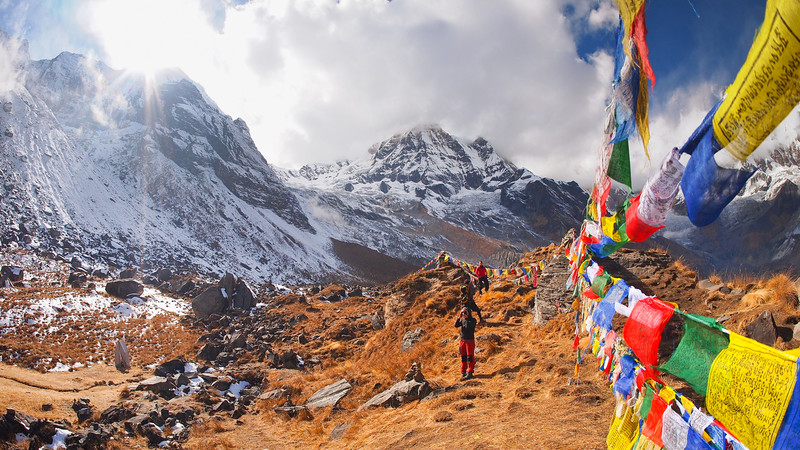 The car turned around, and my heart thudded. Here it was. Unfamiliar, yet unmistakable. Rising boldly out of the earth, towering over the magnificent landscape. The obsession of mountaineers, and the highest point on earth: Mt Everest. Now that’s one for the bucket list.
The car turned around, and my heart thudded. Here it was. Unfamiliar, yet unmistakable. Rising boldly out of the earth, towering over the magnificent landscape. The obsession of mountaineers, and the highest point on earth: Mt Everest. Now that’s one for the bucket list.
Want to visit this magical land for yourself? Check out our range of small group adventures in Tibet.
—
(Image credits from top to bottom: Intrepid Travel, Intrepid Travel, Intrepid Travel, Intrepid Travel, Nathan James Thomas, Josee-Anne Noel, Nathan James Thomas, Intrepid Travel)

